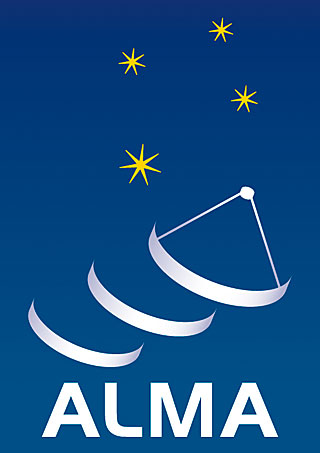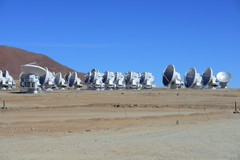|
High on the Chajnantor plateau in the Chilean Andes, the European Southern Observatory (ESO), together with its international partners, is operating the Atacama Large Millimeter/submillimeter Array (ALMA) – a state-of-the-art telescope to study light from some of the coldest objects in the Universe. This light has wavelengths of around a millimetre, between infrared light and radio waves, and is therefore known as millimetre and submillimetre radiation. ALMA comprises 66 high-precision antennas, spread over distances of up to 16 kilometers (10 miles). This global collaboration is the largest ground-based astronomical project in existence.
Millimetre and submillimetre radiation opens a window into the enigmatic cold Universe, but the signals from space are heavily absorbed by water vapour in the Earth’s atmosphere. Telescopes for this kind of astronomy must be built on high, dry sites, such as the 5,000-meter (17,000-feet) high plateau at Chajnantor, one of the highest astronomical observatory sites on Earth.
The ALMA site, some 50 kilometers (31 miles) east of San Pedro de Atacama in northern Chile, is in one of the driest places on Earth. Astronomers find unsurpassed conditions for observing, but they must operate a frontier observatory under very difficult conditions. Chajnantor is more than 750 meters (2,500 feet) higher than the observatories on Mauna Kea, and 2,400 meters (7,900 feet) higher than the VLT on Cerro Paranal. More…, how does ALMA works? and about the facilities.
Special thanks to David Rabanus, the director Pierre Cox and his assistant Daphne Elliott-Patterson for organizing my 2014 visit.
Please also visit the ESO Ultra HD Expedition blog by my friends Babak Tafreshi and Christoph Malin.
Click on thumbnails for a larger version
|

|



 Llano de Chajnantor ALMA Observatory, Chile
Llano de Chajnantor ALMA Observatory, Chile





